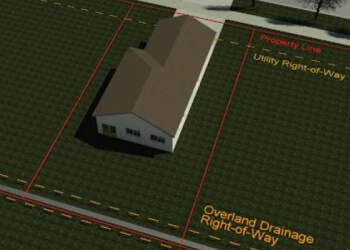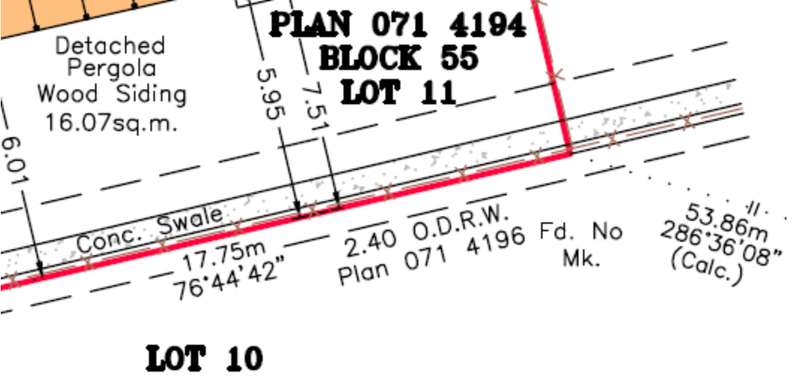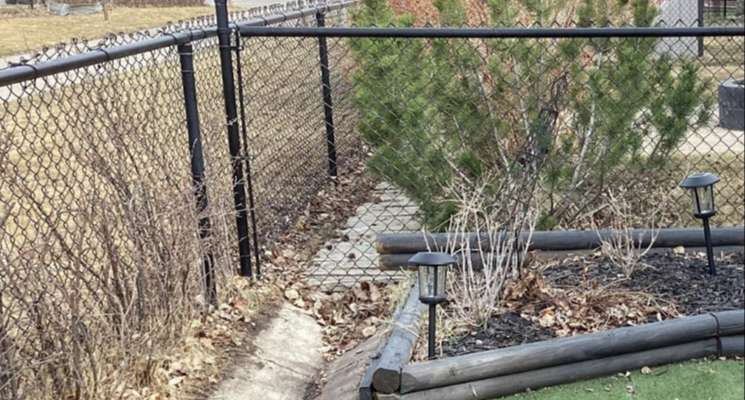Overland Drainage Right of Ways

What is an Overland Drainage Right of Way
A Right of Way (R.W.) is a type of agreement that is registered on a Land Title, the document that specifies the ownership and extent of rights of a specific parcel of land. Right of ways specify by description, or by referenced survey plan, a portion of a parcel of land that has unique restrictions or usage rights to be exercised and enforced by the grantee.
An Overland Drainage Right of Way (O.D.R.W.) is a common type of Right of way that is registered on a parcel’s title and grants the Grantee the right to drain water from and across the parcel, as well as to install structures to facilitate this drainage such as concrete swales. In most cases this same agreement generally prohibits inhibiting the drainage of water, and explicitly the installation of other structures on the right of way area. This is a notable restriction to land owners rights to use their land and should be appreciated.
O.D.R.W. & Real Property Reports
A real Property Report will show location of the right of way, usually noting it as an O.D.R.W. short of Overland Drainage Right of Way. Along with this notation will almost always reference its width and a plan registered at the land titles office indicating its position.

In Calgary, Red Deer and neighbouring municipalities O.D.R.W.’s generally occupy 2.40 metres at the rear property line of the parcel. It is not common, but they can also be located along the side of the parcel. Older parcels, using the original design, will be symmetric with 1.20 metres of the right of way on each side of the property line, for a total of 2.40 metres. Newer designs are asymmetric on each side of the property line, 1.80 metres on the property containing the drainage improvement (usually a concrete swale) and 0.60 metres on the property adjacent and opposite. While the O.D.R.W. grants the municipality the right to maintain the swale if necessary, in Alberta it is normally the responsibility of the property owner to maintain the concrete swale and keep it clear of blockages at all times.
It is a common frustration for land owners to have this area at the back of their property that they should not install structures on, as it is a natural place to put sheds. One should be prepared to either move the structures or get encroachment agreements (if they can) with the municipal authority when selling their house if they have used this area for decks, patios, retaining walls, sheds, or other structures. It should also be noted these above agreements, if they are attainable at all, will cause delays, often significant ones, in the real estate sale, and homeowners should be aware of and prepared for this as well.
